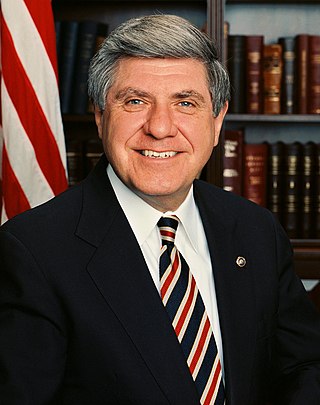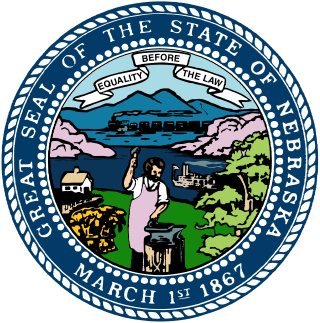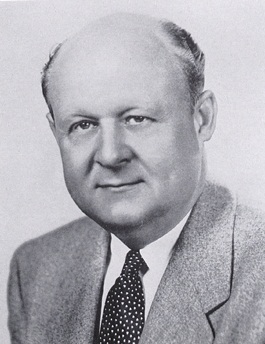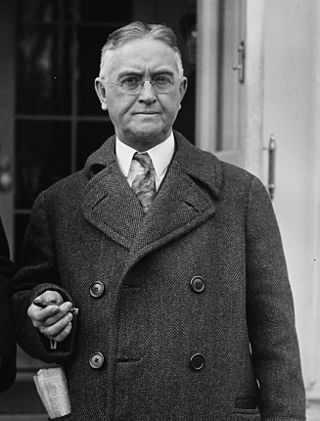
The 1994 Nebraska gubernatorial election was held on November 8, 1994. Incumbent Governor Ben Nelson won a re-election to a second term in a landslide, defeating Republican businessman Gene Spence by 47.4 percentage points and sweeping all but two counties in the state. As of 2024, this is the last time that a Democrat was elected governor of Nebraska.

The 1986 Nebraska gubernatorial election was held on November 4, 1986, and featured state Treasurer Kay Orr, a Republican, defeating Democratic nominee, former Mayor of Lincoln Helen Boosalis. Incumbent Democratic governor Bob Kerrey did not seek a second term.

The 1978 Nebraska gubernatorial election was held on November 7, 1978, and featured U.S. Representative Charles Thone, a Republican, defeating Democratic nominee, Lieutenant Governor Gerald T. Whelan. Incumbent Governor J. James Exon, a Democrat, was barred from seeking a third term.

The 1974 Nebraska gubernatorial election was held on November 5, 1974, and featured incumbent Governor James Exon, a Democrat, defeating Republican nominee, state Senator Richard D. Marvel. Independent state Senator Ernie Chambers also captured 5% of the vote as a write-in candidate. This was the first gubernatorial election in Nebraska in which the nominees for Governor and Lieutenant Governor ran as a single ticket in the general election, though they were chosen in separate primary elections.

The 1956 Nebraska gubernatorial election was held on November 6, 1956, and featured incumbent Governor Victor E. Anderson, a Republican, defeating Democratic nominee, former state Senator Frank Sorrell, as well as independent George Morris, to win a second two-year term in office.

The 1954 Nebraska gubernatorial election was held on November 2, 1954, and featured Mayor of Lincoln Victor E. Anderson, a Republican, defeating Democratic nominee, attorney William Ritchie.

The 1952 Nebraska gubernatorial election was held on November 4, 1952, and featured former Lieutenant Governor Robert B. Crosby, a Republican, defeating Democratic nominee, former state Senator Walter R. Raecke.

The 1948 Nebraska gubernatorial election was held on November 2, 1948, and featured incumbent Governor Val Peterson, a Republican, defeating Democratic nominee, former state Senator Frank Sorrell, to win a second two-year term in office.

The 1942 Nebraska gubernatorial election was held on November 3, 1942. It featured incumbent Governor Dwight Griswold, a Republican, defeating Democratic nominee, former Governor Charles W. Bryan, to win a second two-year term in office.

The 1940 Nebraska gubernatorial election was held on November 5, 1940, and featured newspaper publisher and former state legislator Dwight Griswold, a Republican, defeating Democratic nominee, former U.S. Representative Terry Carpenter. Griswold became the first Republican to win the governorship since 1928.

The 1938 Nebraska gubernatorial election was held on November 8, 1938, and featured incumbent Governor Robert L. Cochran, a Democrat, defeating Republican nominee, Speaker of the state legislature Charles J. Warner, as well as former Democratic Governor Charles W. Bryan, who ran as an Independent, to win a third and final two-year term in office.

The 1924 Nebraska gubernatorial election was held on November 4, 1924, and featured former state Senator Adam McMullen, a Republican, defeating Democratic nominee, former state Representative John N. Norton, and Progressive nominee, Omaha City Commissioner Dan B. Butler.

The 2022 Nebraska gubernatorial election took place on November 8, 2022, to elect the next governor of Nebraska. Incumbent Republican Governor Pete Ricketts was term-limited and unable to seek a third term. In the general election, Republican Jim Pillen won the gubernatorial election by a 23-point margin.

The 1900 Nebraska gubernatorial election was held on November 6, 1900.

The 1960 Nebraska lieutenant gubernatorial election was held on November 8, 1960. Prior to the election, on September 9, 1960, Nebraska Governor Ralph G. Brooks died while in office. This caused then Nebraska Lieutenant Governor Dwight W. Burney to become Governor of Nebraska two months before the election in which he was running for reelection as lieutenant governor. Thus, the 1960 lieutenant governor election featured incumbent Nebraska Governor Dwight W. Burney, a Republican, defeating Democratic nominee Norman A. Otto, who was chosen by the Nebraska Democratic Party to replace Edward A. Dosek, who had won the Democratic primaries but had withdrawn from the race.

The 1956 Nebraska lieutenant gubernatorial election was held on November 6, 1956, and featured Speaker of the Nebraska Legislature Dwight W. Burney, a Republican, defeating Democratic nominee Frank B. Morrison who had been chosen to replace original Democratic nominee Stanley D. Long who had died during the campaign.

The 1954 Nebraska lieutenant gubernatorial election was held on November 2, 1954, and featured incumbent Nebraska Lieutenant Governor Charles J. Warner, a Republican, defeating Democratic nominee Stanley D. Long, a former member of the University of Nebraska Board of Regents, to win his fourth term as lieutenant governor.

The 1950 Nebraska lieutenant gubernatorial election was held on November 7, 1950, and featured incumbent Nebraska Lieutenant Governor Charles J. Warner, a Republican, defeating Democratic nominee Edward A. Dosek, a businessman, to win his second term as lieutenant governor.

The 1948 Nebraska lieutenant gubernatorial election was held on November 2, 1948, and featured former Speaker of the Nebraska Legislature Charles J. Warner, a Republican, defeating Democratic nominee Sam J. Howell.

The 1946 Nebraska lieutenant gubernatorial election was held on November 5, 1946. Incumbent Nebraska Lieutenant Governor Roy W. Johnson lost to Robert B. Crosby in the Republican primaries after the Nebraska Republican Pre-Primary Convention refused to endorse him for reelection. Thus, the general election featured Robert B. Crosby as the Republican nominee who defeated Democratic nominee Robert J. Swanson.










